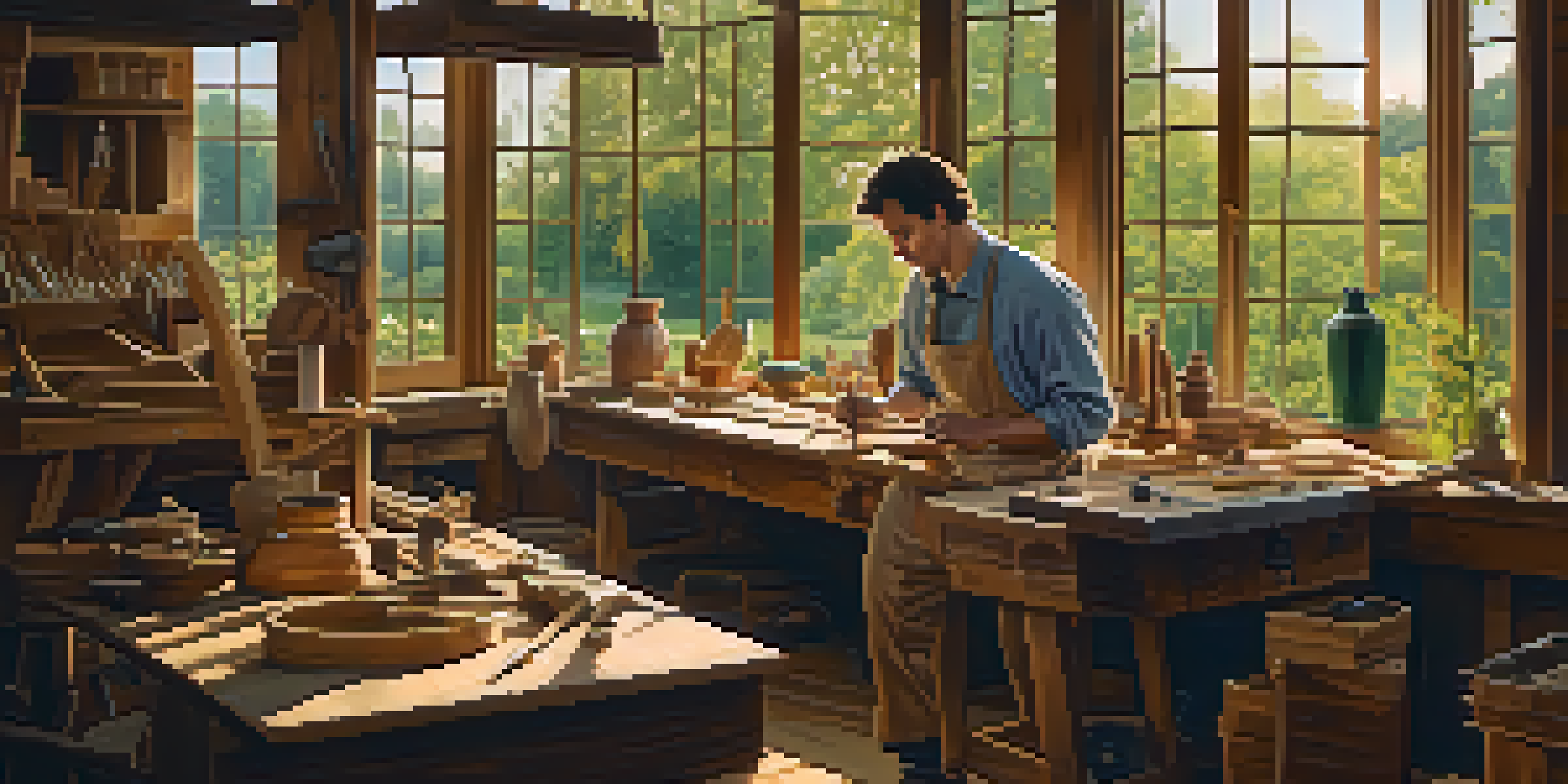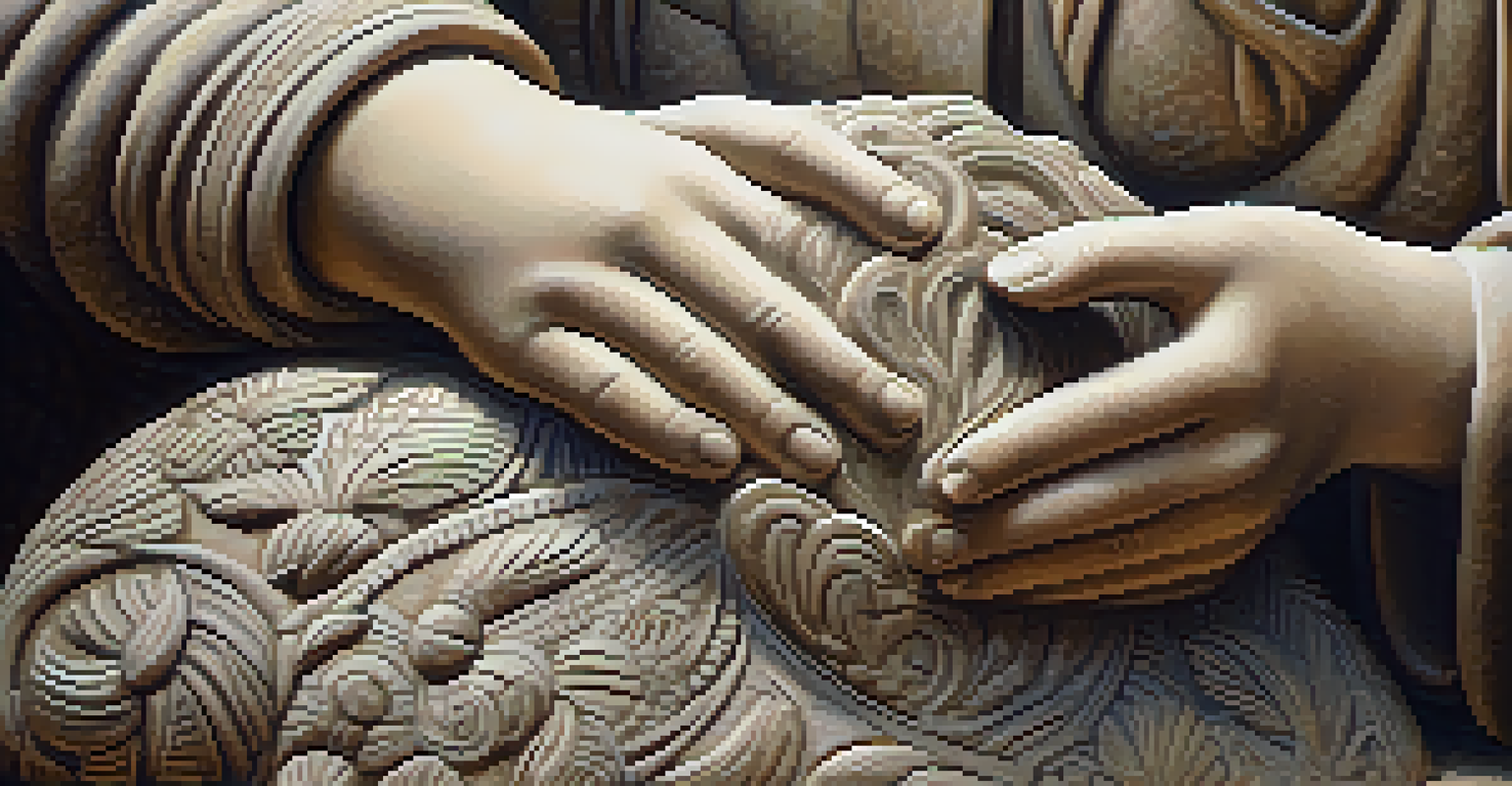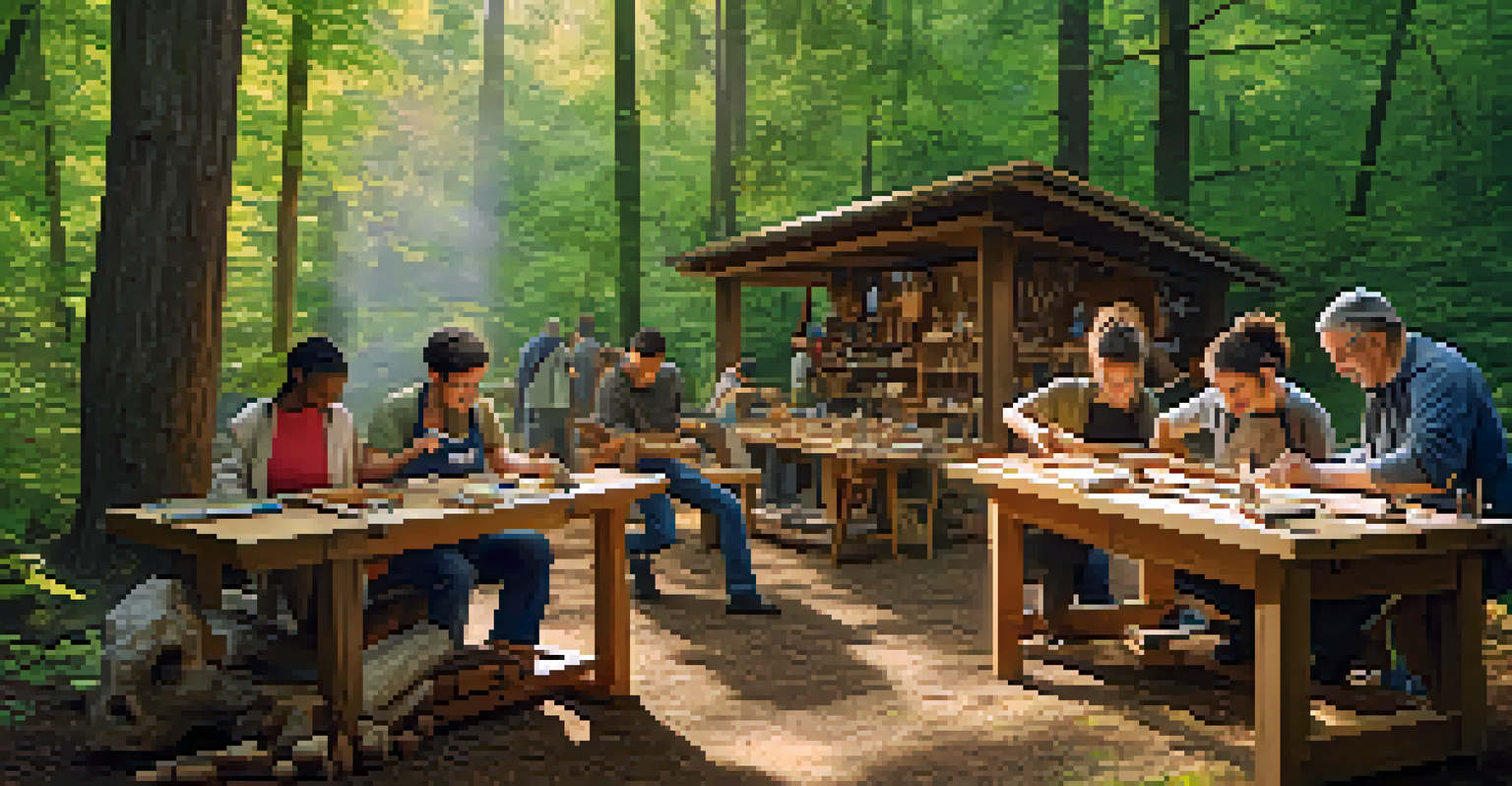The Journey of Carving: From Hobby to Psychological Tool

Understanding Carving as a Creative Outlet
Carving, at its core, is a form of artistic expression that allows individuals to bring their imagination to life. For many, it begins as a simple hobby, providing a welcome escape from the hustle and bustle of daily life. The tactile nature of carving, whether it’s wood, stone, or other materials, engages the senses and fosters a deep connection between the creator and their work.
Art is the most beautiful of all lies.
This creative outlet not only nurtures artistic skills but also encourages mindfulness. As the carver focuses on each cut and detail, they often find themselves immersed in the present moment, momentarily leaving behind their worries. This meditative aspect of carving can be refreshing, allowing for a mental reset that many enthusiasts cherish.
Furthermore, the sense of accomplishment that comes from completing a carving project can boost self-esteem and foster a sense of pride. Beginners often find joy in the learning process, while seasoned carvers revel in refining their skills. This journey of growth transforms a simple pastime into a meaningful practice.
The Transformation from Hobby to Therapeutic Tool
As individuals delve deeper into carving, many find that it offers therapeutic benefits beyond mere enjoyment. The act of carving can serve as a powerful coping mechanism for stress and anxiety, providing an outlet for emotions that may be difficult to express verbally. This transformation from hobby to therapeutic tool often occurs organically, as the carver discovers the calming effects of the process.

In therapy settings, carving is increasingly recognized for its ability to facilitate emotional expression. For example, art therapists often use carving to help clients process feelings of grief or trauma. The physical act of shaping and molding material can mirror the internal work clients are doing, creating a tangible representation of their emotional journey.
Carving Enhances Mindfulness
Engaging in carving promotes mindfulness by allowing individuals to focus on the present moment, fostering relaxation and mental clarity.
Moreover, carving can foster a sense of community among practitioners, as sharing techniques and finished pieces builds connections. This social aspect adds another layer to its therapeutic potential, as individuals support one another in both their creative and emotional endeavors. The shared experience can help alleviate feelings of isolation, making carving a holistic tool for healing.
Mindfulness and Focus: Carving as a Form of Meditation
Carving has a unique way of promoting mindfulness, akin to traditional meditation practices. When engaged in carving, individuals often enter a state of flow, where time seems to stand still, and distractions fade away. This focused attention not only enhances the quality of the work but also promotes mental clarity and relaxation.
Creativity takes courage.
The rhythmic motion of carving can be calming, as the carver’s mind becomes attuned to the repetitive actions and sounds of the tools. This focus on the present moment is crucial in mindfulness practices, helping to ground individuals and reduce anxiety. Many carvers describe a sense of peace that envelops them as they immerse themselves in their craft.
Incorporating mindfulness into carving can be as simple as concentrating on the texture of the material or the sound of the tool against it. This intentional focus can lead to a deeper understanding of oneself and cultivate a sense of gratitude for the creative process. Ultimately, the meditative nature of carving enriches both the art and the artist.
Building Emotional Resilience Through Carving
Engaging in carving can significantly contribute to emotional resilience, equipping individuals with tools to navigate life’s challenges. As carvers confront the inevitable frustrations that come with mastering a new skill, they learn patience and perseverance. Each mistake becomes an opportunity for growth, fostering a mindset that embraces challenges rather than shying away from them.
Through the process of creating, individuals also gain insight into their emotions. Carving can act as a mirror, reflecting inner thoughts and feelings that might otherwise remain unexamined. This introspection can lead to greater self-awareness, allowing individuals to process their emotions more effectively and build healthier coping mechanisms.
Carving as a Therapeutic Tool
The act of carving serves as a powerful coping mechanism for stress and anxiety, providing a means for emotional expression and healing.
Additionally, the act of creating something tangible can instill a sense of control during turbulent times. By channeling their energies into carving, individuals can reclaim agency over their mental well-being. This empowerment is a crucial component of emotional resilience, enabling individuals to face life’s ups and downs with confidence.
Carving as a Connection to Nature and Heritage
For many, carving is deeply rooted in cultural traditions and a connection to nature. The choice of materials often reflects local resources, with wood and stone being popular choices that link carvers to their environment. This connection to the earth not only enriches the experience but also fosters a sense of responsibility for preserving natural resources.
Moreover, carving techniques are often passed down through generations, preserving cultural heritage and stories. As carvers learn from elders or community workshops, they are not only honing their skills but also keeping traditions alive. This aspect of carving can create a sense of belonging and identity, grounding individuals in their roots.
Embracing the natural world through carving can also enhance the psychological benefits. The act of working with natural materials encourages mindfulness and appreciation for the beauty around us. This connection to nature can reduce stress and foster a sense of peace, making carving a holistic practice for both the mind and spirit.
The Role of Community in Carving Practices
Community plays a vital role in the journey of carving, as it fosters connection and shared learning. Many carvers find joy in joining clubs or attending workshops, where they can exchange ideas, techniques, and encouragement. This communal aspect not only enhances skills but also cultivates friendships, creating a supportive network for artists at all levels.
These gatherings often become a safe space for individuals to express themselves and share their experiences. The camaraderie built in these environments can be incredibly healing, especially for those facing mental health challenges. Knowing that others share similar passions and struggles can alleviate feelings of isolation and encourage personal growth.
Community Strengthens Carving Journey
Participation in carving communities fosters connection and support, enhancing personal growth and reducing feelings of isolation for artists.
In addition, community events such as exhibitions or craft fairs provide opportunities for carvers to showcase their work and gain recognition. Celebrating each other’s achievements fosters a sense of pride and belonging, reinforcing the importance of collaboration in the artistic journey. Ultimately, the community enriches the carving experience, making it not just an individual pursuit but a collective celebration of creativity.
Embracing the Journey: Carving for Mental Health and Growth
The journey of carving is not just about creating beautiful pieces; it’s about personal growth and mental well-being. As individuals embrace this craft, they often discover new facets of themselves, exploring emotions and thoughts that surface during the creative process. This journey can be transformative, leading to greater self-acceptance and emotional clarity.
Moreover, carving offers a unique platform for self-expression, allowing individuals to communicate their feelings and experiences in a tangible way. This creative expression can be particularly beneficial for those who struggle with verbal communication, providing an alternative means to convey their inner world. The resulting artwork becomes a testament to their journey, embodying their growth and resilience.

Ultimately, carving serves as a reminder that the process is just as important as the end result. Embracing this journey can lead to profound insights and healing, making carving a meaningful practice for those seeking to enhance their mental health. As individuals carve their way through life, they not only create art but also cultivate a deeper connection to themselves and the world around them.